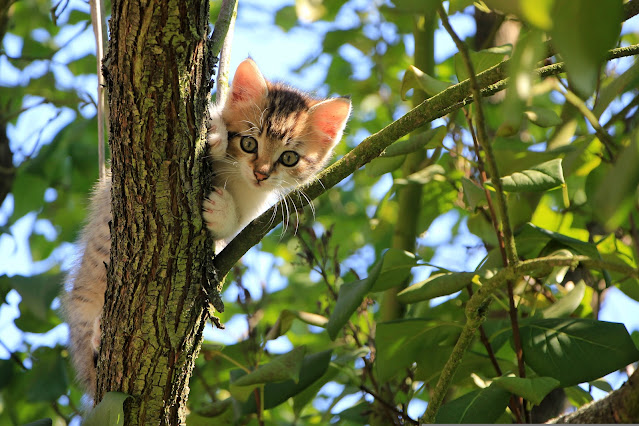Cat Stuck in a Tree? Here's What You Should Do
When a cat finds itself stuck in a tree, its health and life can be at risk. It's crucial to take action to get the cat down before dehydration sets in and it falls from the tree. However, it's important to note that the fire service is unlikely to assist with a cat stuck in a tree these days. Before reaching out to emergency services like the RSPCA, consider the following tips on how to rescue a cat from a tree:
1. Utilize a ladder
Using a ladder is an effective method to rescue a cat from a tree. While it may seem unsafe, with proper precautions, it can be successful. If the ladder appears unstable, do not attempt the rescue. Additionally, if you are alone, involving others is recommended for everyone's safety. With the assistance of two other people, the cat owner can climb the ladder, retrieve the cat, and pass it down to the individuals below. This process may seem complex, but it has proven to be effective. Alternatively, if there's someone at the bottom of the ladder, they can help guide the cat into a carrier.
2. Identify the cause of reluctance
If your cat is usually comfortable climbing trees but suddenly finds itself stuck, there might be an underlying reason causing distress. Factors such as the presence of other animals, dogs, or loud noises from lawnmowers can scare a cat and prevent it from descending. It's crucial to address and remove the source of distress. Give it some time in a quiet environment, using cat-specific music or calming scents like a diffuser. If the issue persists, you can proceed with ladder rescue or try other techniques.
People Also Read-Easy 8 tips to remove cat hair from carpet
3. Tempt the cat with its favorite food
Feeding your cat its favorite food can be a way to entice it to come down from the tree. Placing the food on the lowest branch or on the ground increases the likelihood of success. It's important not to go back inside the house immediately after providing the food, as the cat may climb back up if it's still feeling scared. Once the cat gets close to you, try to guide it into a carrier for safe retrieval.
4. Ensure a soft landing
If you opt for a mechanical approach using a long stick to remove the cat from the tree, make sure it lands safely on its feet. Prepare a soft landing area with mattresses, blankets, or cushions surrounding the tree. Adding familiar items with your scent, such as blankets from your house, can provide comfort and reassurance for the cat to jump down.
5. Guide the cat with light
While cats have excellent night vision, they can be enticed to descend from the tree using a laser pointer. Many cats find laser pointers engaging, and a cat stuck in a tree might be tempted to play and chase the light, even if it's hesitant about coming down.
When to seek help?
Indoor cats and those without climbing experience, such as kittens or declawed cats, may struggle when stuck in trees. In such cases, it's advisable to seek help. Severe weather conditions like electrical storms, high winds, or approaching rain also warrant assistance. If you notice a cat sitting in a tree for an extended period without an owner nearby, contacting a local rescuer is recommended. Cats can quickly become dehydrated without access to water or wet food, especially if exposed to the sun for prolonged periods.
Who to call for help?
While the fire department was previously the go-to for cat rescues, it's uncommon for them to assist in such situations nowadays. However, most areas have professional cat rescuers who can offer assistance. It's essential to research and identify these resources in your locality. In the United Kingdom, you can contact the RSPCA at 0300 1234 999 for help. Remember, though, that they handle numerous emergencies, so it's best to consider them as a last resort.
Preventing future tree incidents
Ideally, keeping your cat indoors is the safest solution. However, transitioning an outdoor cat to an indoor-only lifestyle can be challenging. To provide environmental enrichment, consider providing a cat perch or a large cat tree near a window, allowing your cat to observe the outside world. With practice, you can even take your cat for walks using a harness and leash, providing supervised outdoor experiences while ensuring its safety.








0 Comments